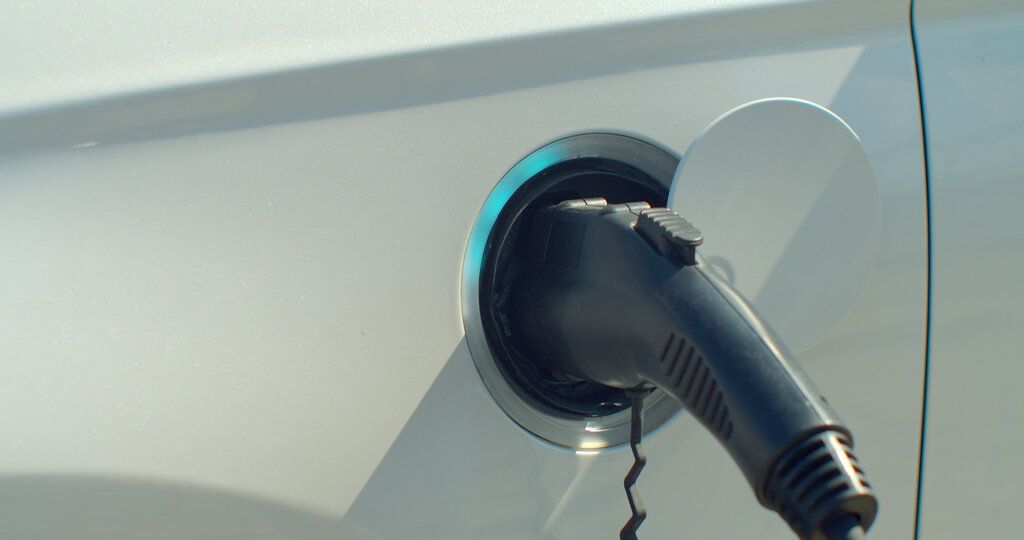From today (15th June 2022) all new homes and buildings such as supermarkets or workplaces built in England, will be required to have electric vehicle (EV) charging points installed.
Any new building developments with associated parking must have access to EV charge points, in a change to building regulations. It’s hoped that the new rules about EV chargers in new build homes will lead to the installation of an additional 145,000 charge points every year.
The Electric Vehicle Association (EVA) England, which acts as the voice of electric vehicle drivers, has welcomed the move to mandate the installation of charging infrastructure in new homes and buildings.
CEO James Court told Transport + Energy: “Very welcome news, and one of the many no regrets policies we have been advocating for. For too long the UK building industry has been stuck by short-term thinking which is now presenting issues as we look to transition to greener alternatives not just in transport, but heating and power too.”
Gill Nowell, Head of Electric Vehicles at LV= General Insurance and ElectriX, added: “This is a fantastic step in the right direction for the acceleration of electric car uptake in England, and sends a strong signal to the market that the UK is leading the EV charge. Charging at home overnight is by far the cheapest and most convenient way to charge your car, and by mandating installation of charging infrastructure in new homes and buildings, it will both enable and encourage people to make the switch.
“As ever the devil is in the detail, and we will need to be careful that new homeowners have the benefit of choice – for example where solar panels are installed, it makes sense to optimise energy use with a solar-enabled smart charger. The last thing we want to see is redundant infrastructure where the charger is ‘the wrong sort for the job’. On a positive note, this legislation will allow EV drivers to take advantage of cheaper and greener energy tariffs, which helps not only the consumer, but the energy networks as well. Overall this is good news for our electric future.”
Joel Teague, CEO of Co Charger, commented: “This new legislation will be ideal for residents of new build properties who want to run an EV. But the fact is some may prefer to stick with their petrol or diesel vehicle, choose not to have a car at all or maybe don’t even possess a driving licence. In any of these latter cases the charger, which is an expensive piece of equipment could be left gathering dust for years or even decades. Yet there are 14 million people in the UK who live in flats and terraces many of whom are desperate to get out of their fossil fuel vehicles but don’t have access to a charger of their own or accessible and reliable public ones.
“We need to take the emphasis off just purchasing more public chargers, which are expensive to install and maintain and make the most of home driveway chargers via neighbourhood charger sharing. It’s hoped that the new rules about EV chargers in new build homes will lead to the installation of an additional 145,000 charge points every year. If just 10% of these were rented out to neighbours that would mean an additional 14,500 charge points annually – without any additional holes being dug in the road or public money spent.”
Charlie Cook, Founder and CEO of Rightcharge, said: “The best thing about the policy is that homes are going to be built with the wiring and electronics in place. The hardest thing about charge point installations to domestic properties is retrofitting the electronics. The easy bit is plugging the charge point on to the wall. If you put it in context we’ve got a target to build 300,000 homes a year. I think we’re lucky if we do around half that at the moment. There’s already around 16 million homes with driveways and they’ll need to be retrofitted. This policy is going to mean that for the next 10 years around 100,000 to 200,000 homes a year are going to be in a better state. This is a great step and it is going to mean that one or two million new homes a year are not going to require an expensive retrofit like the rest of the 16 million.
“There are two outcomes. With the way the policy is structured at the moment the inevitable outcome is that housing developers will find the cheapest charge point that meets regulations and put that on the front of a house. That means that as well as the positive of having the wiring done there’s now a negative that drivers won’t have a charge point that meets their needs. There is no one size fits all charge point. One example is that a lot of these homes are either going to have solar retrofitted to them or might be built with solar on them as a standard – so if you put the cheapest charger on the market on those houses it is not going to do the best job of pulling the excess solar off those panels and putting it into the car. We’re currently seeing a huge growth in the number of people getting solar and the situation with energy tariffs is making that market very hot. We recently did a survey and a surprising percentage of EV drivers either have solar or are looking to get it. We don’t want to see all now homes fitted with the cheapest charger. The negatives of that are that it might not do some great things that could be done with a better solution.”
Image: Shutterstock.








